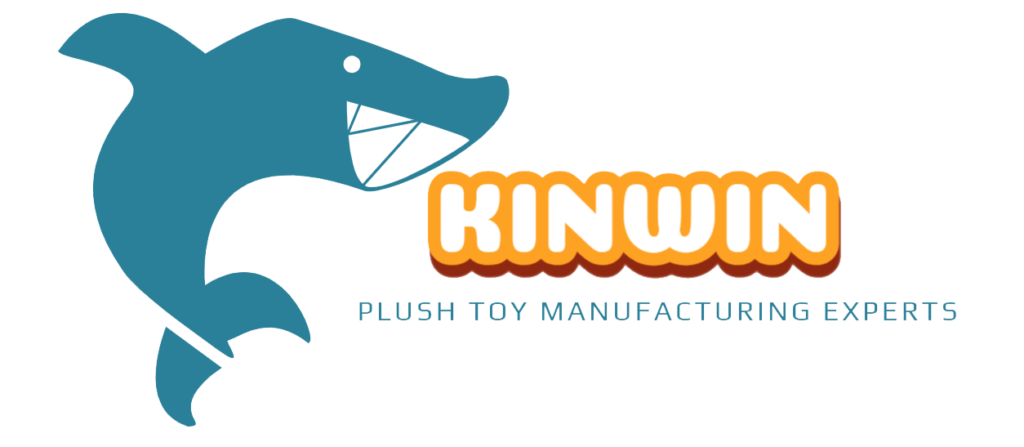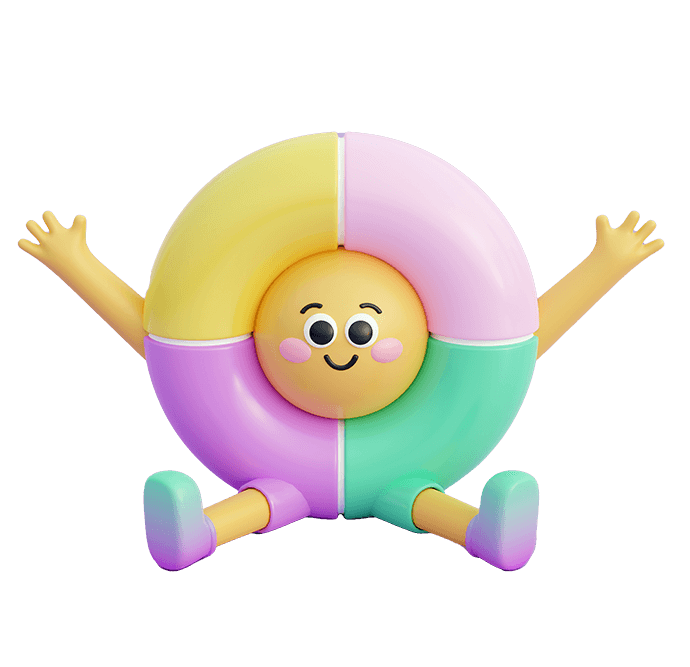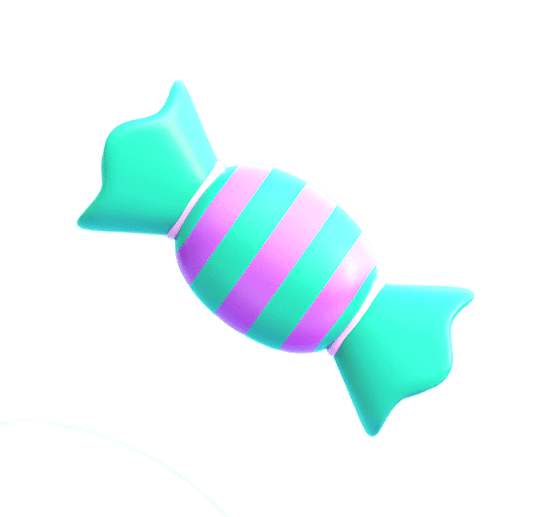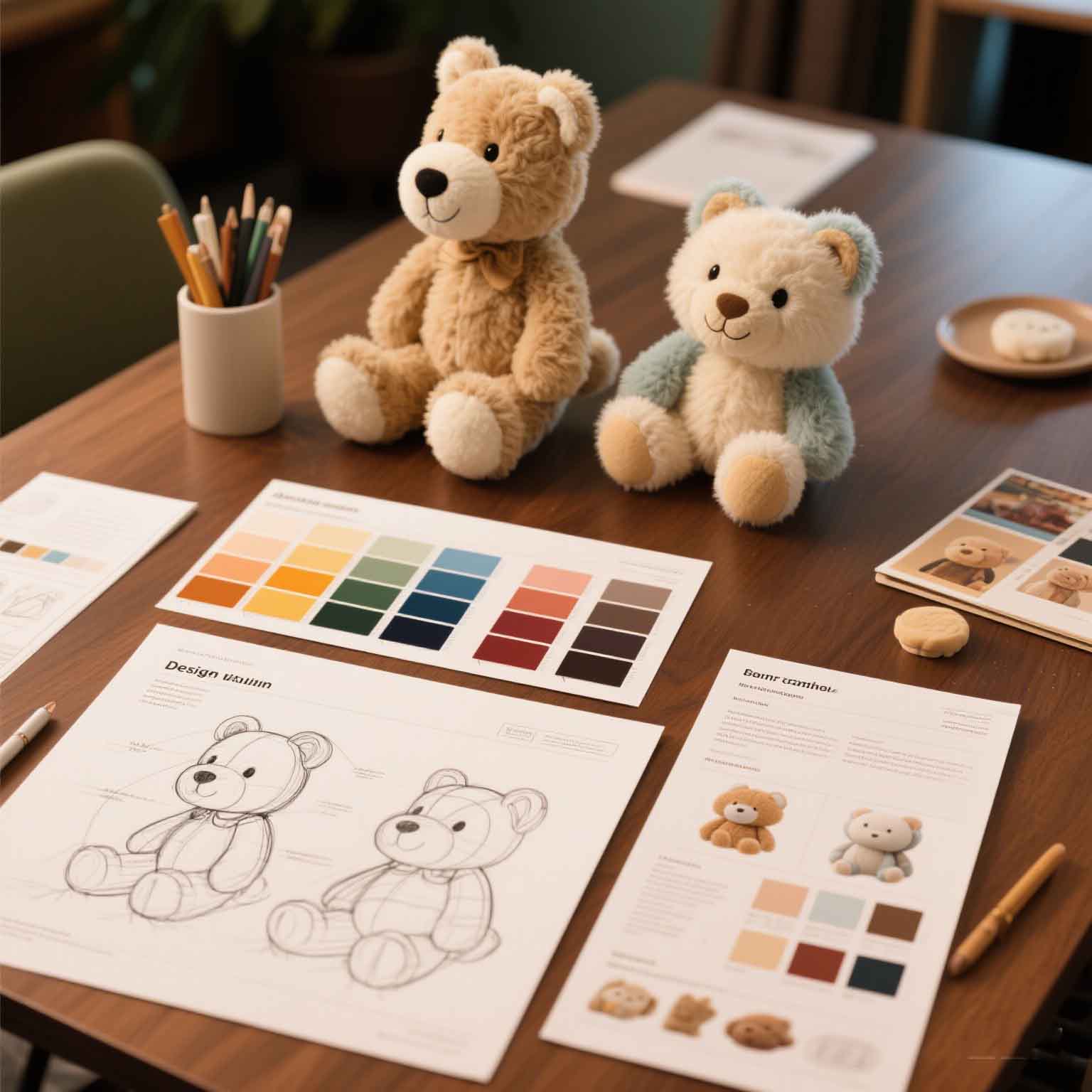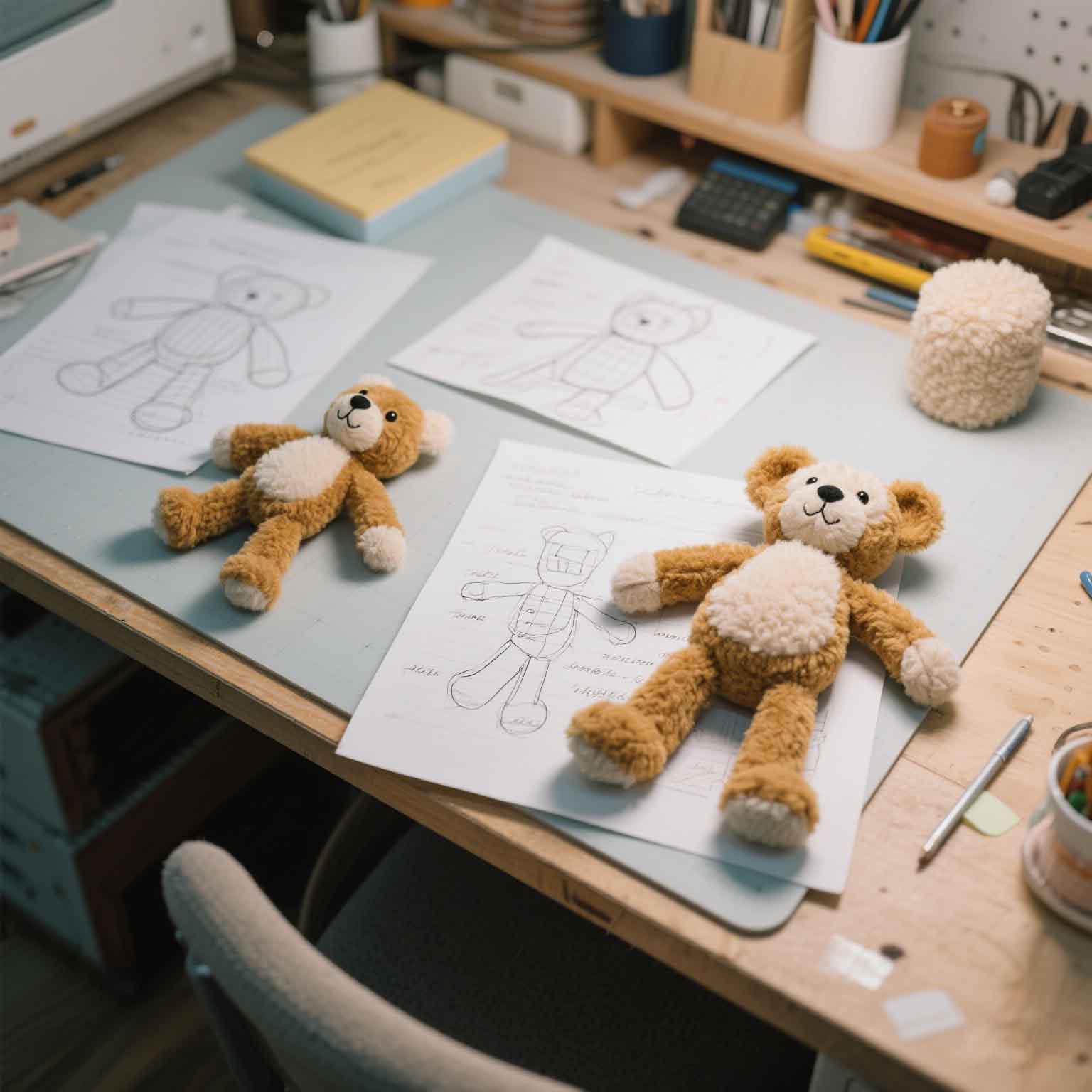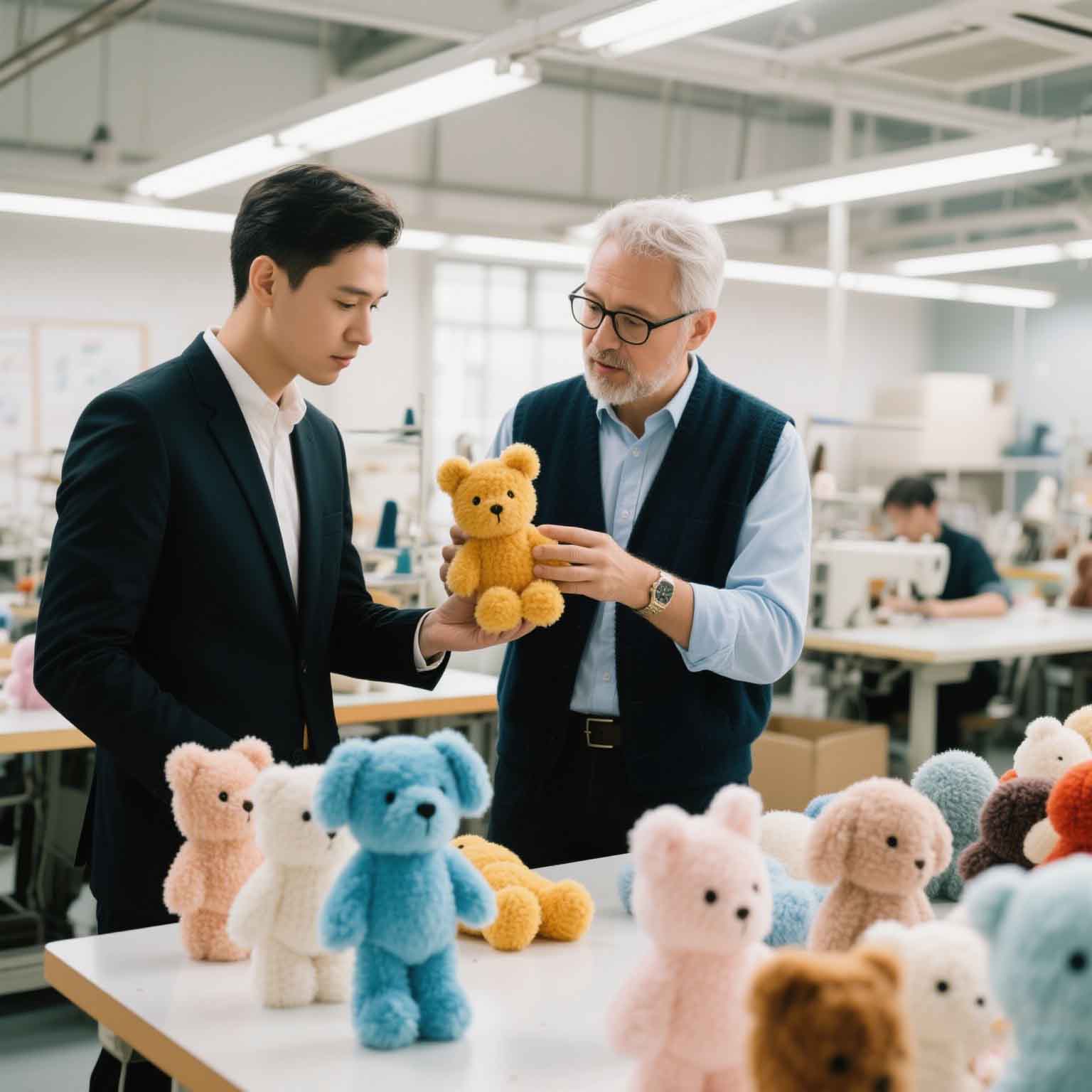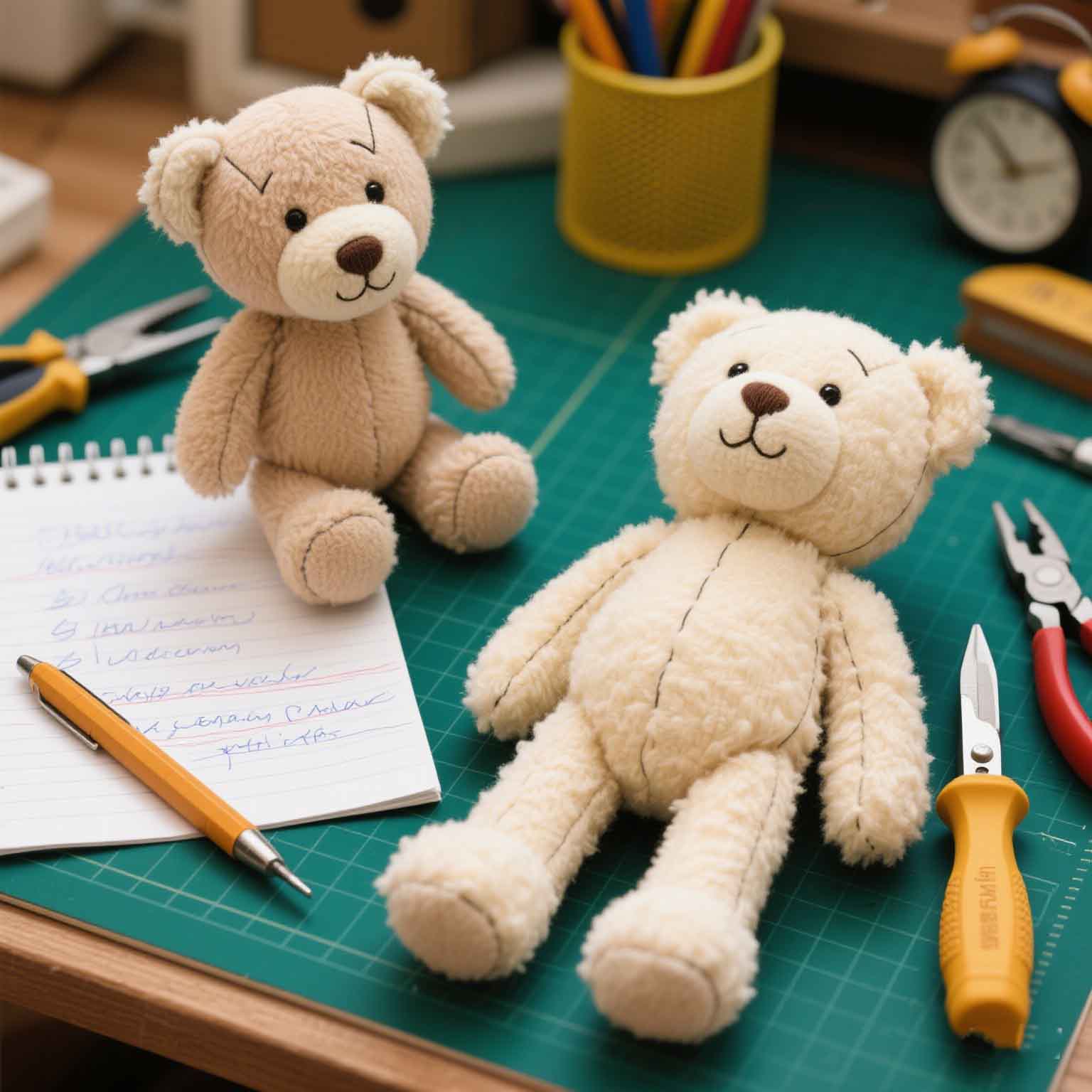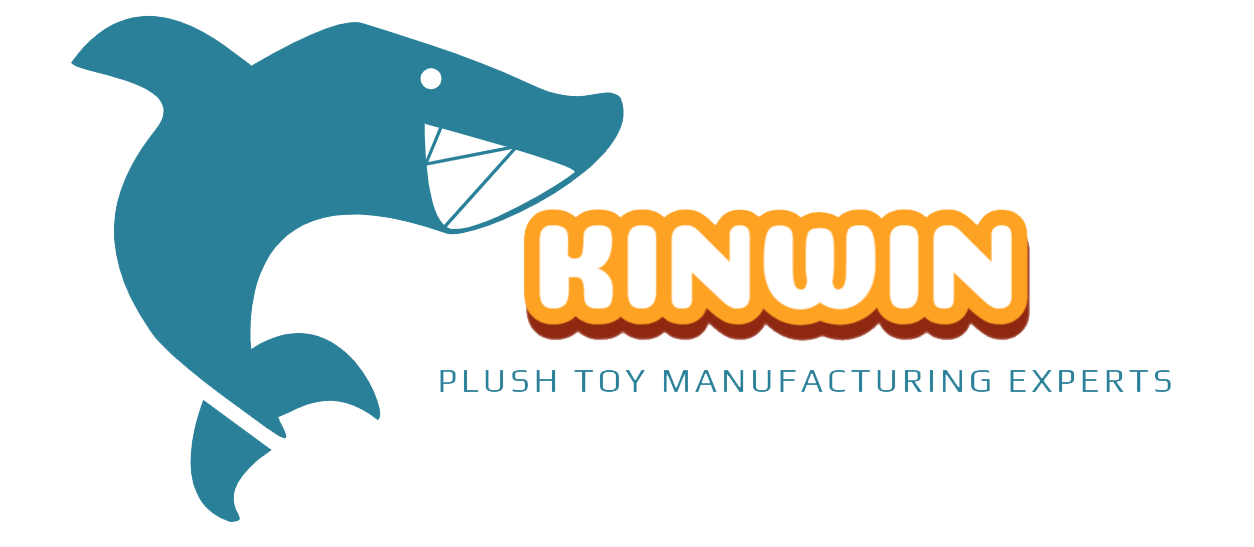Introduction
Did you know that up to 30% of custom plush toy orders fail to meet expectations due to simple mistakes? For business owners and designers, these errors can waste time, money, and damage your brand’s reputation.
Whether you’re creating brand mascots, educational tools, or personalized gifts, avoiding **custom plush toy mistakes** is crucial for flawless results. From vague design briefs to skipped prototypes, this guide highlights the pitfalls to watch out for and offers practical tips to ensure your vision comes to life exactly as planned.
Crafting a Precise Design Brief for Flawless Execution
Creating a custom plush toy starts with a clear design brief. This document acts like a roadmap, guiding manufacturers to bring your vision to life without costly custom plush toy mistakes. A well-crafted brief saves time, reduces revisions, and ensures the final product matches your expectations.
Defining a Design Brief: Key Elements Like Size, Colors, and Textures
A design brief should spell out every detail. Specify the toy’s size, exact colors, and textures, like soft fur or smooth velvet. Clear instructions prevent common plush toy design errors, such as mismatched shades or incorrect proportions, keeping your project on track.
Include practical details, like whether the toy needs to be squeezable or stand upright. For example, a mascot might require a firm base for display. These specifics help manufacturers like those at plushtoyinchina.com deliver toys that align with your goals.
Common Errors in Vague Briefs Leading to Misaligned Prototypes
Vague briefs are a recipe for trouble. Skipping details like stitching style or facial expressions often leads to plush toy production errors. A prototype that misses the mark wastes time and money, frustrating everyone involved.
For instance, saying “make it cute” without examples leaves too much room for interpretation. Instead, provide precise descriptions, like “round eyes with a slight sparkle.” This clarity avoids custom plush toy mistakes and ensures prototypes hit closer to your vision.
Tips for Including Brand-Specific Details for Mascots or Promotional Toys
Brand mascots or promotional toys need to reflect your identity. Include logo placement, taglines, or even specific postures that scream your brand’s vibe. These details make toys instantly recognizable to your audience.
Consider a mascot’s personality—maybe it’s “totally chill” with a relaxed pose. Share these traits in the brief to capture the essence. A detailed brief helps manufacturers craft toys that strengthen your brand’s message.
Tools for Creating Clear Visual References
Visuals speak louder than words. Sketches, mood boards, or even photos of similar toys clarify your expectations. Tools like Canva or Adobe Spark make it easy to create professional references, even if you’re not an artist.
A mood board might show color swatches or fabric samples to nail the texture. These tools reduce guesswork, ensuring manufacturers understand your vision. Pair visuals with written details for the best results.
A precise design brief cuts down on revisions and aligns manufacturers with your vision, saving time and ensuring brand-perfect custom plush toys.
Design Brief Effectiveness Comparison
| Aspect | Vague Brief | Basic Brief | Detailed Brief | Industry Benchmark |
|---|---|---|---|---|
| Revision Rounds | 4-6 | 2-3 | 0-1 | 1 |
| Prototype Accuracy (%) | 50% | 75% | 95% | 90% |
| Production Time (Weeks) | 12 | 8 | 6 | 7 |
| Cost Overruns (%) | 30% | 15% | 5% | 10% |
| Brand Alignment (%) | 60% | 80% | 98% | 95% |
Note: Revision rounds and prototype accuracy measured via industry surveys (Toy Association, 2023). Production time and costs based on average plush toy projects. Brand alignment reflects client satisfaction rates.
By following these tips for successful custom plush toy design, you streamline production and avoid errors. A clear brief ensures manufacturers deliver toys that captivate your audience. Start with details, visuals, and brand focus for flawless execution.
Prototyping Early to Catch Flaws Fast
Prototyping is a game-changer in custom plush toy production. Creating a physical sample early helps spot issues before they spiral into costly custom plush toy mistakes. It’s your chance to hold, feel, and tweak the design to perfection.
Why Prototyping Matters: Benefits of Physical Samples
A prototype brings your vision to life. It reveals details sketches can’t, like how materials feel or if proportions look right. Catching these custom plush manufacturing pitfalls early saves time and keeps budgets in check.
Manufacturers like those at plushtoyinchina.com emphasize sampling before mass production. This step ensures the final toy matches your expectations. Without it, you risk flaws that could’ve been fixed upfront.</
Common Mistakes When Skipping or Rushing Prototypes
Skipping prototypes is a risky move. Rushing them can lead to sloppy stitching or wrong textures, turning your vision into a mess. These custom plush toy mistakes often mean starting over, wasting resources.
A common error is assuming digital designs are enough. They’re not. Physical samples catch what screens miss, like a seam that pops under pressure.
How to Review a Prototype: Checking Stitching, Materials, and Proportions
Reviewing a prototype means getting hands-on. Check the stitching—loose threads signal trouble. Test materials for softness and durability, ensuring they match your brief.
Proportions matter too. Hold the toy, tilt it, and see if it feels “on point”. If the head’s too big or limbs feel off, note it for adjustments.
Best Practices for Providing Feedback to Manufacturers
Clear feedback makes or breaks the next round. Be specific—say “the fur needs to be 10% shorter” instead of “it’s too fluffy.” Photos or marked-up sketches help manufacturers nail revisions.
Work collaboratively, like a team tweaking a recipe. At plushtoyinchina.com, they refine samples based on your input, ensuring the final toy aligns with your brand’s needs.
Prototyping early lets you catch design flaws before production, saving time and ensuring your custom plush toy matches your vision perfectly.
Prototype Review Metrics Comparison
| Metric | No Prototype | Rushed Prototype | Thorough Prototype | Industry Standard |
|---|---|---|---|---|
| Flaw Detection Rate (%) | 20% | 60% | 95% | 90% |
| Revision Rounds | 5 | 3 | 1 | 2 |
| Production Delays (Days) | 14 | 7 | 2 | 3 |
| Material Waste (%) | 25% | 15% | 5% | 8% |
| Client Satisfaction (%) | 65% | 85% | 98% | 95% |
Note: Data sourced from 2023 Toy Industry Reports. Flaw detection measured by defect identification pre-production. Satisfaction based on client surveys post-delivery.
Mastering how to produce custom plush toys without errors starts with prototyping. It’s your safety net, catching flaws early and aligning the final product with your vision. Invest time in samples, and you’ll save headaches later.
Communicating Clearly to Avoid Costly Revisions
Clear communication is the backbone of successful custom plush toy production. Missteps in relaying your vision can lead to custom plush toy mistakes that inflate costs and delay timelines. Staying transparent with manufacturers keeps everyone aligned and your project on track.
Key Communication Touchpoints: Initial Brief, Prototype Feedback, Production Updates
Start with a detailed initial brief to set expectations. Follow up with specific prototype feedback, pointing out what’s “straight-up” perfect or needs tweaking. Regular production updates ensure no surprises, catching plush toy production errors before they escalate.
Manufacturers like those at plushtoyinchina.com rely on these touchpoints to deliver toys that match your brand’s standards. Skipping any step risks misalignment. Stay engaged to keep the process smooth.
Pitfalls of Poor Communication Leading to Errors in Design or Materials
Poor communication breeds mistakes. Vague emails or skipped check-ins can result in wrong fabrics or off-brand designs. These custom plush toy mistakes often mean costly do-overs that could’ve been avoided.
For example, failing to confirm material choices might lead to a toy that’s too stiff. Clear dialogue upfront prevents these headaches, saving time and money.
Strategies for Effective Dialogue: Regular Check-Ins, Clear Documentation
Schedule regular check-ins to stay in sync. Document every decision—colors, sizes, stitching—in writing to avoid confusion. This clarity helps manufacturers deliver exactly what you envisioned.
Be direct but collaborative. Instead of saying “it’s off,” explain “the eyes need to be 5mm larger.” This precision streamlines revisions and builds trust.
Tools for Collaboration: Email Templates, Project Management Software
Tools make communication easier. Use email templates to structure feedback clearly, covering key points like texture or proportions. Project management software like Trello or Asana tracks tasks and deadlines, keeping everyone accountable.
These tools help you stay organized, especially for complex projects. They ensure no detail slips through, supporting avoidable mistakes in custom plush toy production.
Clear communication with manufacturers prevents errors, cuts revisions, and ensures your custom plush toy arrives on time and on brand.
Communication Impact on Production
| Metric | Poor Communication | Basic Communication | Clear Communication | Industry Standard |
|---|---|---|---|---|
| Error Rate (%) | 25% | 10% | 2% | 5% |
| Revision Rounds | 4 | 2 | 1 | 1.5 |
| Delivery Delays (Days) | 10 | 5 | 0 | 2 |
| Cost Overruns (%) | 20% | 10% | 3% | 5% |
| Client Approval Rate (%) | 70% | 85% | 98% | 95% |
Note: Data from 2024 toy industry surveys. Error rate reflects design/material mismatches. Approval rate based on final product satisfaction.
Effective communication eliminates plush toy production errors and ensures timely delivery. By using touchpoints, tools, and clear documentation, you’ll avoid pitfalls and get a toy that nails your vision. Stay proactive to keep costs low and quality high.
Prioritizing Quality Control for Consistent Results
Quality control is crucial for delivering flawless custom plush toys. Without rigorous checks, you risk issues like loose seams or uneven stuffing, which can harm your brand’s reputation.
Understanding Quality Control: Inspections at Every Stage
Quality control begins with inspecting raw materials for durability and safety. During production, checks ensure stitching and assembly meet standards. Final inspections verify the toy’s appearance and feel, preventing defects from reaching customers.
Common Oversights Leading to Defects
Neglecting quality checks often results in problems like loose stitching or lumpy stuffing. These flaws can disappoint customers and lead to returns. For instance, missing a final check might overlook misaligned features, lowering product quality.
Setting Quality Standards
Establish clear standards upfront, detailing specifics like stitch strength or stuffing consistency to reflect your brand’s identity. Communicate these to manufacturers through written guidelines to ensure alignment and consistency.
Benefits of Third-Party Inspections
For large orders, third-party inspections add an extra layer of assurance. They catch issues manufacturers might miss, ensuring every toy meets your standards before shipping.
Planning for Revisions to Perfect the Final Product
Revisions are a vital step in crafting custom plush toys that truly shine. Planning for adjustments after prototyping helps avoid custom plush toy mistakes and ensures the final product matches your vision. Smart budgeting of time and resources keeps the process smooth and stress-free.
Why Revisions Are Essential: Addressing Prototype Feedback
Prototypes reveal what needs tweaking, from proportions to textures. Addressing feedback refines the toy, fixing plush toy design challenges like uneven stitching or off-brand colors. Manufacturers like those at plushtoyinchina.com use this feedback to align with your goals.
Skipping revisions risks a product that feels half-baked. Taking time to perfect details ensures the toy resonates with your audience. It’s about getting it “just right”.
Mistakes in Underestimating Time or Costs for Adjustments
Underestimating revision needs is a common trap. Assuming one round is enough can lead to rushed fixes or custom plush toy mistakes like misaligned features. These oversights inflate costs and delay production.
Plan for multiple rounds if needed. Budgeting for adjustments upfront prevents surprises and keeps your project on track.
How to Prioritize Revisions: Focus on Functionality, Aesthetics, and Safety
Prioritize revisions based on impact. Fix functionality first—ensure the toy holds up during play. Then tweak aesthetics, like eye placement, followed by safety checks, such as secure seams.
This order tackles plush toy design challenges efficiently. Clear priorities guide manufacturers to deliver a toy that’s safe, stunning, and sturdy.
Creating a Revision Timeline for Seamless Production
A revision timeline keeps everyone aligned. Set milestones for feedback, sample reviews, and final approval, allowing 1-2 weeks per round. Tools like Google Calendar or Trello help track progress.
At plushtoyinchina.com, their approval-based model ensures revisions fit seamlessly into production. A clear timeline supports tips for successful custom plush toy design, avoiding delays.
Planning for revisions ensures your custom plush toy evolves from prototype to perfection, saving costs and delivering a product that nails your vision.
Revision Planning Effectiveness
| Metric | No Revision Plan | Basic Plan | Detailed Plan | Industry Standard |
|---|---|---|---|---|
| Revision Rounds | 5 | 3 | 1 | 2 |
| Cost Overruns (%) | 25% | 10% | 3% | 5% |
| Production Delays (Days) | 14 | 7 | 2 | 3 |
| Defect Rate (%) | 20% | 8% | 2% | 5% |
| Client Satisfaction (%) | 70% | 85% | 98% | 95% |
Note: Data from 2024 toy industry reports. Defect rate reflects post-production errors. Satisfaction based on client feedback surveys.
By following tips for successful custom plush toy design, revisions become a strength, not a setback. Plan wisely, prioritize smartly, and keep timelines tight to perfect your plush toy. You’ll end up with a product that’s ready to impress.
Conclusión
After years of designing plush toys, I’ve learned that sidestepping common pitfalls comes down to clarity and care. A detailed brief, early prototypes, and open communication with manufacturers can transform your vision into a toy that feels **”spot-on”**.
Getting it right isn’t just about avoiding mistakes—it’s about crafting something that sparks joy and nails your brand’s vibe. I’ve seen firsthand how a little planning saves time, money, and headaches.
So, as you dive into your next plush project, keep those details sharp and your feedback clear. What’s the one detail you’ll focus on to make your toy stand out?
FAQ
-
Q1: What are common mistakes in custom plush toy design?
A1: Some common mistakes include inadequate quality control, poor material choice, and inaccurate pattern design. These issues can lead to a final product that doesn’t match the intended design.
-
Q2: How can rushed production affect custom plush toys?
A2: Rushed production often leads to manufacturing errors, poor finishing, and compromised quality, affecting the toy’s durability and appearance.
-
Q3: Why is material choice important in plush toy manufacturing?
A3: Selecting appropriate materials ensures the toy’s safety, durability, and softness, which are crucial for meeting customer expectations and safety standards.
-
Q4: What causes custom plush toys to differ from initial designs?
A4: Differences typically arise from inaccurate pattern sewing, improper scaling, and overlooked design elements during the manufacturing process.
-
Q5: How does quality control influence plush toy production?
A5: Effective quality control helps identify and rectify defects early, ensuring consistency and reducing the likelihood of errors reaching customers.
-
Q6: What are the risks of improper stitching in plush toys?
A6: Improper stitching can lead to weak seams, resulting in durability issues and potential safety hazards for children.
-
Q7: Why are prototypes important in custom plush toy production?
A7: Prototypes allow manufacturers to test design accuracy, functionality, and material performance, identifying potential issues before full production.
-
Q8: How can brands prevent design missteps in plush toys?
A8: Brands can avoid missteps by collaborating closely with experienced designers, performing thorough quality checks, and allowing adequate time for production.
External Links
- 12 Blunders Brands Make with Their Custom Plush Toy Giveaways
- Top 10 Mistakes That Can Make Your Custom Plush Toys Look Different
- Avoid These 11 Common Mistakes for Custom Plush Toys
- The Ultimate Checklist: Inspecting Custom Plush Toys
- From Concept to Production: How to Manufacture Stuffed Toys
- Are You Making These Critical Mistakes When Commissioning Custom Plushies?
- Avoid These 11 Common Mistakes for Custom Plush Toys
- Top 10 Mistakes to Avoid Custom Plush Toys Catastrophe
